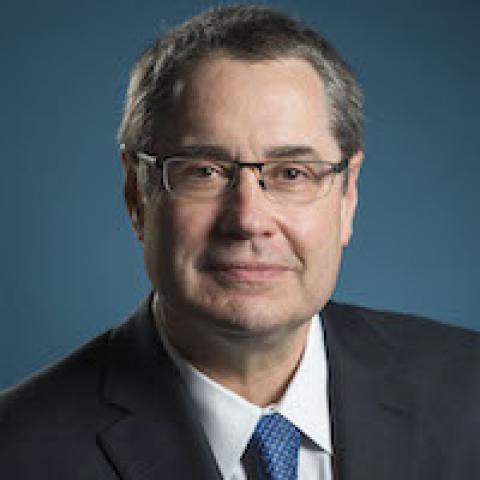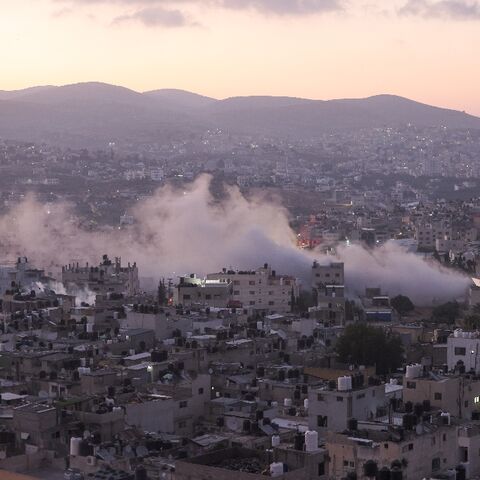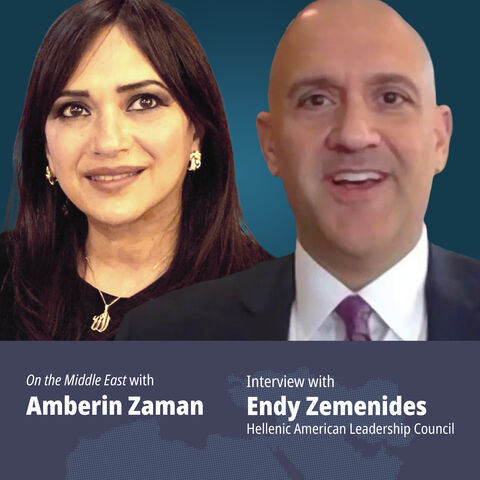Dr. Hagop Kantarjian, chair of the University of Texas MD Anderson Cancer Center leukemia department, is described by his colleagues and peers as “one of the most influential cancer doctors of his generation,” according to a recent profile in the Houston Chronicle.
Kantarjian is this year’s recipient of the prestigious David A. Karnofsky Memorial Award, presented by the American Society of Clinical Oncology to physicians who make outstanding contributions to cancer research and treatment. His leukemia research has transformed patient treatment and care, and improved survival rates for patients with many types of leukemia.
In an exclusive interview with Al-Monitor, Kantarjian discussed his journey from Beirut to MD Anderson in Houston, and why he feels an obligation to give back to Lebanon and the Middle East.
From Beirut to Houston
Kantarjian was born into a large family in Lebanon in 1954. “Lebanon shaped my life and my future,” he told Al-Monitor. “It's a country that you get addicted to and you love tremendously.”
His father is Armenian and his mother is Syrian, and “in those days, the two ethnic groups almost never mixed, so I like to think of their union as a story from Romeo and Juliet, but with a happy ending.”
Two events influenced Kantarjian’s journey. One was the Lebanese civil war, which began in 1975 and continued through 1991. The second was a four-month internship at MD Anderson in 1978. "The MD Anderson cancer research was led then by one of the giant pioneers in cancer research, Emil Freireich, an amazing charismatic leader, highly innovative, who had developed one of the first research programs in cancer in the world,” Kantarjian said. “And what I realized is they were creating knowledge, rather than just absorbing knowledge.”
He learned during his internship “that 90% of the knowledge in medical textbooks is very transient and will be obsolete in 10 years. So I decided I'd like to be part of the knowledge creation rather than just knowledge absorption.”
Kantarjian returned to MD Andersen in 1981 to join the leukemia faculty and has never left, going on to become professor and chair of the Department of Leukemia and the Samsung Distinguished Leukemia Chair in Cancer Medicine, in addition to numerous awards and recognition for his groundbreaking accomplishments.
“I'm one of the very few lucky people who hit the job jackpot on the first try," Kantarjian said. "And MD Anderson is the best place to be, if you want to do research, or leukemia research.”
Giving back in Lebanon
"Since I decided to stay in the United States, I have a lot of guilt,” said Kantarjian. “I owe a debt to both the American University of Beirut and to Lebanon.”
Kantarjian repaid that debt first by establishing a sister institution connection for AUB with MD Anderson, which lasted for 20 years. The collaboration allowed Kantarjian and his American colleagues to engage AUB leukemia researchers on their most difficult cases, in addition to establishing numerous fellowships, internships, and student and faculty exchanges.
His associations with other leukemia researchers and cancer centers in the Middle East extend beyond Lebanon to Saudi Arabia, the United Arab Emirates, Turkey, Iraq, Armenia, and the King Hussein Cancer Center in Jordan.
Establishing student exchanges and internships is important to him "because my experience in 1978 shaped my life,” Kantarjian told Al-Monitor. “I like to think that other people who come to MD Anderson for a brief period of time will be so impressed that they will end up dedicating their career to cancer and leukemia research.”
In addition, Kantarjian also established the Society of Hematologic Oncology in 2010. What started as a small group today includes about 7,000 international members with regional meetings in the Middle East and North Africa and worldwide, including Brazil, Italy, France, Turkey, Saudi Arabia, and other countries.
“I'm very impressed about the current and new generations of cancer and hematologic malignancy researchers in many areas of the Middle East,” said Kantarjian. “I meet them at conferences and symposia in the Middle East and abroad. And I'm very impressed that they have a lot of interest in doing research and becoming experts in their particular areas.”
Uncovering differences in leukemia trends
Kantarjian’s research has uncovered differences in the rate of leukemia types around the world. In the United States, the ratio is three acute myeloid leukemia (AML) cases to one acute lymphocytic leukemia (ALL) case, he said, but in the Middle East, the ratio is almost reversed, 2 ALL to 1 AML.
“I'm pretty confident that this is something related, not to genetics, but to the environmental conditions, but I haven't been able to figure it out," Kantarjian said. "There's always the notion ALL could be generated through viral infections that expand the lymphoid clones which then go loose, but we've never been able to prove that.”
Middle East leukemia experts will need to do their own research "to try to figure out whether this is true or whether this is something that's just a perception,” he added.
“Another thing I noticed is a higher than anticipated incidence of lymphoma and multiple myeloma in Lebanon and the Middle East,” he said. He heard an anecdote of a village in Syria where farmers used heavy amounts of fertilizer on their crops, and almost every man developed lymphoma by age 40. "This tells me that certainly there are a lot of regional causes of cancers that need to be explored by the Middle East cancer experts, he said. " We tried to develop research collaborations about 20 years ago. It was not possible, however, because of the situation in Syria."
Breaking down barriers to health care
Kantarjian is legendary for his brisk and effective clinical drug trials, and has become a passionate advocate for affordable drug prices and universal health care.
“I have a keen interest in the issues of health care and barriers to optimal and affordable health care in the United States and elsewhere in the world,” he said in an interview in April.
“If you get a cancer drug that cures 100 percent of the cancers, and it’s affordable to only 1 percent or 5 percent of the population, then you haven’t cured cancer,” Kantarjian told the Chronicle.
What little down time Kantarjian may have is filled by art — he is an amateur painter — and exercise.
In both painting and medicine, he said this month, “you always want to innovate and create something that did not exist before.”







